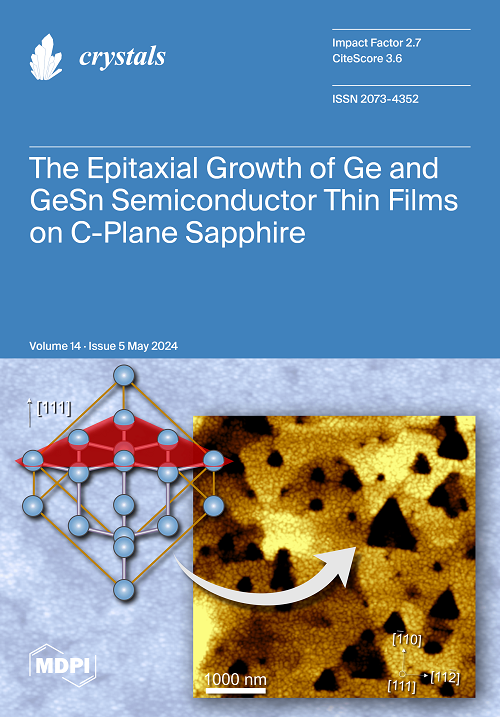Magnon Confinement on the Two-Dimensional Penrose Lattice: Perpendicular-Space Analysis of the Dynamic Structure Factor
IF 2.4
4区 材料科学
Q2 CRYSTALLOGRAPHY
引用次数: 0
Abstract
Employing the spin-wave formalism within and beyond the harmonic-oscillator approx-imation, we study the dynamic structure factors of spin-12 nearest-neighbor quantum Heisenberg antiferromagnets on two-dimensional quasiperiodic lattices with particular emphasis on a mag-netic analog to the well-known confined states of a hopping Hamiltonian for independent electrons on a two-dimensional Penrose lattice. We present comprehensive calculations on the C5v Penrose tiling in comparison with the C8v Ammann–Beenker tiling, revealing their decagonal and octagonal antiferromagnetic microstructures. Their dynamic spin structure factors both exhibit linear soft modes emergent at magnetic Bragg wavevectors and have nearly or fairly flat scattering bands, signifying magnetic excitations localized in some way, at several different energies in a self-similar manner. In particular, the lowest-lying highly flat mode is distinctive of the Penrose lattice, which is mediated by its unique antiferromagnons confined within tricoordinated sites only, unlike their itinerant electron counterparts involving pentacoordinated, as well as tricoordinated, sites. Bringing harmonic antiferromagnons into higher-order quantum interaction splits, the lowest-lying nearly flat scattering band in two, each mediated by further confined antiferromagnons, which is fully demonstrated and throughly visualized in the perpendicular as well as real spaces. We disclose superconfined antiferromagnons on the two-dimensional Penrose lattice.二维彭罗斯晶格上的磁子约束:动态结构因子的垂直空间分析
我们在谐振子近似和超越谐振子近似的范围内运用自旋波形式主义,研究了二维准周期晶格上自旋-12近邻量子海森堡反铁磁体的动态结构因子,特别强调了二维彭罗斯晶格上独立电子的跳变哈密顿著名的约束态的磁学模拟。我们对 C5v 彭罗斯网格与 C8v 阿曼-贝克尔网格进行了全面的计算比较,揭示了它们的十边形和八边形反铁磁微结构。它们的动态自旋结构因子都表现出在磁布拉格波向处出现的线性软模式,并具有近似或相当平坦的散射带,这表明磁激发以某种方式在几个不同的能量处以自相似的方式局部化。与涉及五配位和三配位的巡回电子对应物不同的是,彭罗斯晶格的独特之处在于其独特的反铁磁子只局限于三配位内,而最低的高度平坦模式则是彭罗斯晶格的独特之处。将谐波反铁磁子引入高阶量子相互作用会将最低的近乎平坦的散射带一分为二,每个散射带都由进一步限制的反铁磁子介导。我们揭示了二维彭罗斯晶格上的超约束反铁磁子。
本文章由计算机程序翻译,如有差异,请以英文原文为准。
求助全文
约1分钟内获得全文
求助全文
来源期刊

Crystals
CRYSTALLOGRAPHYMATERIALS SCIENCE, MULTIDIS-MATERIALS SCIENCE, MULTIDISCIPLINARY
CiteScore
4.20
自引率
11.10%
发文量
1527
审稿时长
16.12 days
期刊介绍:
Crystals (ISSN 2073-4352) is an open access journal that covers all aspects of crystalline material research. Crystals can act as a reference, and as a publication resource, to the community. It publishes reviews, regular research articles, and short communications. Our aim is to encourage scientists to publish their experimental and theoretical results in as much detail as possible. Therefore, there is no restriction on article length. Full experimental details must be provided to enable the results to be reproduced. Crystals provides a forum for the advancement of our understanding of the nucleation, growth, processing, and characterization of crystalline materials. Their mechanical, chemical, electronic, magnetic, and optical properties, and their diverse applications, are all considered to be of importance.
 求助内容:
求助内容: 应助结果提醒方式:
应助结果提醒方式:


